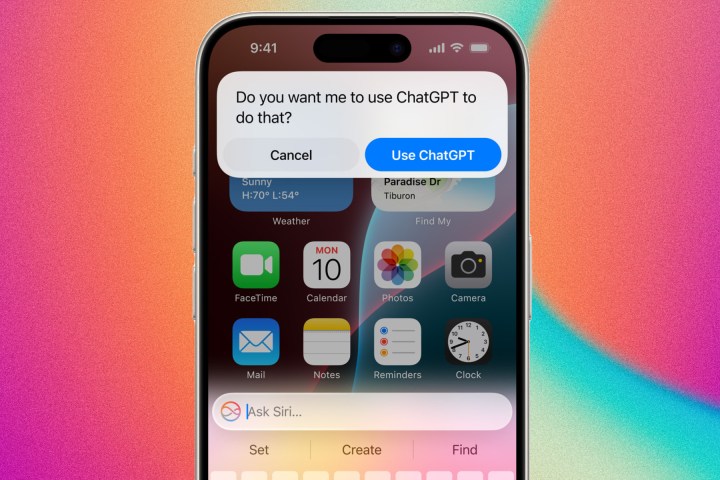Whether you love or hate it, AI doesn’t appear to be going away anytime soon. In fact, AI is evolving quite rapidly, and it’s now in the palms of our hands with our smartphones, as Google, Samsung, and even Apple have now fully embraced our AI future.
Though Apple was late to the game with Apple Intelligence, the company majorly hyped it up for the iPhone 16 launch in September, even though, amazingly, it did not roll out until October with the iOS 18.1 update. The staggered release schedule for Apple Intelligence confused many consumers as to why they did not have Apple Intelligence immediately with their iPhone 16 purchases, and it felt like a big misstep from Apple.
But now that we’ve all had access to Apple Intelligence for the last few months of 2024, I have to say that it hasn’t made as big of an impact on my iPhone usage as originally thought.
The AI that Apple got right

There are a lot of features that Apple packed into Apple Intelligence, but so far, I’ve only found a few of them actually useful in my daily usage.
For one, the Clean Up tool has been very helpful when I need it. I’ve always been annoyed that prior to iOS 18, iOS users would have to download some kind of third-party photo editing app in order to get an object-removing tool, which is usually locked away behind a paywall, too. Meanwhile, Google has had the Magic Eraser tool since the Pixel 6 series, and Samsung has its own Object Eraser. But until iOS 18, Apple users were left out in the dust.
I don’t necessarily need to use Clean Up every time I want to share a photo, but it has been very useful to have when an image needs a touchup. Removing pieces of trash on the ground, power lines from a beautiful sky background, small scuffs and other imperfections, and various strangers passing by — Clean Up does a great job with these things.

Previously, if I needed to edit a photo to remove something, I’d have to do it in Google Photos on my iPhone 16 Pro or even use my Pixel 9 Pro. But now that Clean Up is available, I no longer have to juggle various apps or phones to get the job done.
Another Apple Intelligence tool that I like is Visual Intelligence. This feature is exclusive to the iPhone 16 line as it requires the Camera Control button, and for me, it has made the button worth using.
This isn’t a feature I use dozens of times every day, but I have encountered some situations where it is convenient. For example, identifying plants or animals and translating text. I’m surprised it took Apple this long to integrate such a feature, as it’s just like Google Lens.
What Apple got wrong

I was excited to check out more Apple Intelligence features when I got the iOS 18.2 update on my iPhone 16 Pro. But aside from what I’ve already mentioned, the rest isn’t as exciting.
I already hate AI art in general, so I wasn’t too thrilled about Image Playground. However, since it’s a new feature, I had to try it at least once. I tried to get Apple Intelligence to generate an AI image of me, in various scenarios, to perhaps share on social media. But every result I got did not look good to me, and I felt it had no actual resemblance to my image.
It kept giving me odd-looking teeth in my smiles, hair that looked nothing like what I had, and other imperfections. I wasn’t expecting a perfect picture, but I was hoping I would get something that would be decent enough to share online — dozens of tries, and I wasn’t happy with any of them. I suppose my appearance doesn’t work with Apple’s AI art style? Whatever the reason is, my experience with it hasn’t been positive.

Genmoji, on the other hand, is pretty fun to use. I often send emojis in my chats, so creating some unique ones that I can’t get with the regular emojis is fun to mess with. And the fact that they show up in your “recently used” emoji can mean fast access in the future.
I also feel similarly to the AI tools for text, though summarization is nifty even if I don’t use it much. As a writer myself and someone who enjoys writing in general, I’m not a big fan of any AI writing tool. Plus, if you have your own writing style, the AI-generated text will look out of place anyway, as it usually tries too hard, especially the professional tone.
And while Siri got a little smarter with iOS 18, it still is not good. It still doesn’t seem to be able to handle multi-modal requests, so hopefully, that comes sooner rather than later. But even with some basic things, Siri gets confused easily. Compared to the competition, there is still a way to go. Adding ChatGPT support was a good idea, though.
Much ado about nothing

In the end, I think Apple’s staggered rollout of Apple Intelligence did more harm than good. A lot of people bought the new iPhone 16 devices because they wanted these AI features, which Apple marketed heavily in the stores, but it didn’t even launch with the devices. So everyone, myself included, continued to use the iPhone 16 and iPhone 16 Pro like their predecessors.
A month after the launch of the iPhone 16, Apple finally started to roll out Apple Intelligence, but not all of the features, just a few of them. We only got Clean Up, Writing Tools, Summarization, priority messages in Mail, and slightly improved Siri in iOS 18.1 in October. With iOS 18.2 in December, we finally got Image Playground, Genmoji, Visual Intelligence, and ChatGPT integration.
This is a slow rollout of AI features that Apple’s biggest competitors have already offered for months. And at this point, aside from a few cool tools, it just feels like Apple Intelligence is already losing its luster. Apple Intelligence hasn’t affected my overall use of the iPhone 16 Pro, as I’m still primarily using it like my iPhone 15 Pro from a year ago. That’s not a bad thing for me, but it’s also not a great look for Apple Intelligence’s future.




